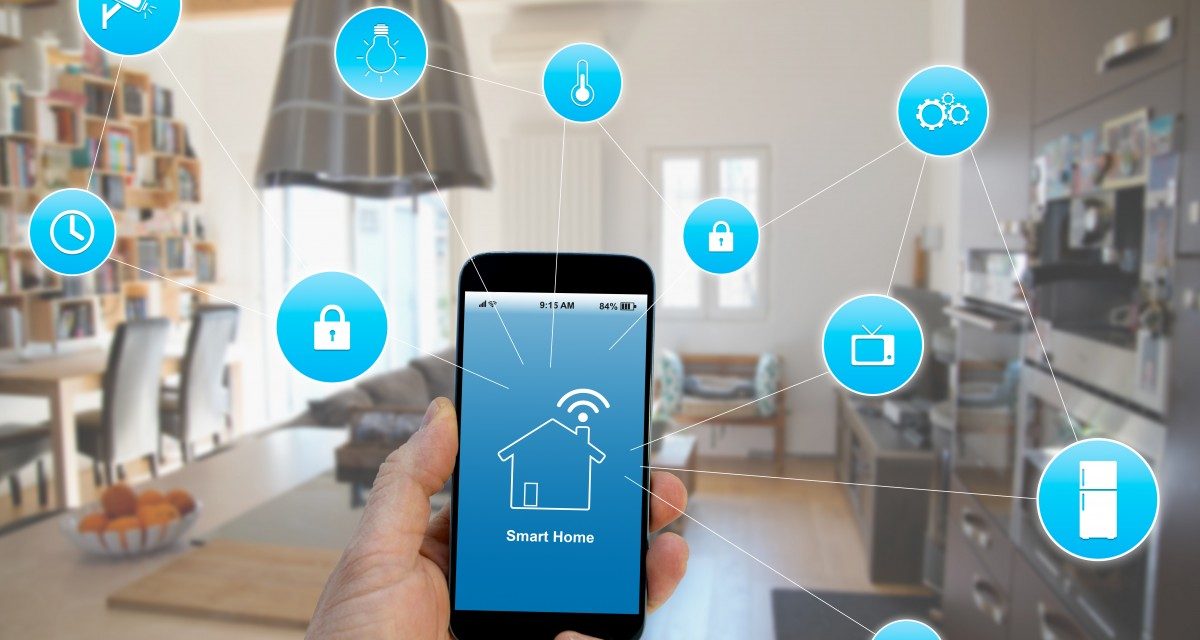Why IoT Protocols are the Foundation of a Smart Home


David Basch
How many smart home devices do you have? If you looked around your house, you probably wouldn’t find too many; maybe you have a smart doorbell, a voice-activated assistant or a connected medical device. Although most of us could probably count our smart home devices on one hand, they are becoming increasingly integrated into our everyday lives. In fact, the smart home market – which was worth $55.65 billion in 2016 – is projected to shoot up to $174.24 billion by 2025.
When you only use a few IoT (Internet of Things) devices, you can get by without having common IoT protocols or data communication standards to govern the ecosystem. After all, there is no reason your doorbell needs to “talk” to your coffeemaker and having two different apps to manage two different devices isn’t a huge hassle.
But as IoT technology evolves and our homes become more connected, we’ll need all of our devices to be able to interact with each other, their controller and the local wireless connectivity system (e.g., Wi-Fi, Bluetooth). Otherwise, the typical IoT ecosystem doesn’t flow as smoothly as it should. And isn’t the whole point of a smart home to make our lives easier?
Why Do We Need to Establish a Common IoT Protocol?
Smart devices manufactured by different brands often speak slightly or even very different languages because there is no generally accepted data communication protocol. This makes it difficult for devices in the IoT ecosystem to communicate with each other, thereby hampering semantic interoperability. It is almost as if they understand every other word or a small cluster of words the other device is transmitting. This poor interoperability diminishes the convenience and efficiency these devices are supposed to offer users.
To ensure a strong IoT ecosystem, some consumers and businesses might become brand-aligned and purchase devices from the same product families. For example, a homeowner might upgrade his or her home with a refrigerator, washer and dryer from the same brand and use a smartphone to control all of them. However, these devices still need to connect with the user’s home Wi-Fi in a plug-and-play fashion to enable easy setup. From there, the devices need to effortlessly maintain that connection to ensure that they are ready to work when the user needs them.
It is likely that users will want to integrate a product from another brand into their IoT ecosystem at some point. This opens up the inter-device data communication issue again. Many smaller devices are intended for self-installation by the user, and if installation and integration are not simple enough, users will have more headaches than they bargained for. In addition, if the devices do not follow the same cybersecurity protocols, the smart network could have holes that allow hackers to steal information or alter the system.
IoT Protocols Would Benefit OEMs and Users Alike
In Jabil’s 2020 Smart Home Technology Trends survey, 99% of 215 decision-makers at companies that produce smart home products agreed that there is value in having data communication standards. The specific potential benefits to tech companies are wide-ranging. IoT protocols would:
- drive the opportunity to build hubs that manage all connected devices
- speed up user adoption of smart home and business devices because users will not have to grapple with device integration challenges
- allow companies to focus on their core strengths instead of worrying about connectivity issues
- enable brand owners to capture rich data sets by correlating with other types of connected devices
- simplify payments for up-selling and cross-selling opportunities
Of course, data communication standards would also benefit the end-customer. Ideally, after a user plugs in a new device and turns it on, the device will connect with the local network to seamlessly join the IoT ecosystem. This hassle-free, user-friendly network protocol strategy would allow consumers to easily install a connected device on their own.
Simplifying things could prove beneficial to the 96% of our recent survey participants who reported challenges in delivering the desired customer experience with their solutions. If nothing else, it could lead to a big pay-off for the 98% who acknowledged that delivering an exceptional customer experience opens up opportunities for smart home solutions.
Furthermore, the smart home market is growing rapidly. In just two years, 57% of survey participants have seen overall market opportunity more than double. In fact, opportunity has been growing more quickly than a third of our respondents expected.
That means that the perfect time to solidify these standards is right now, while the number of consumers adopting connected devices is skyrocketing. At some point, most — or even all — devices in a home or building will be smart. Establishing a common language for these products will ensure top-quality IoT connectivity, allowing new devices to integrate into smart homes or networks effortlessly and work together in harmony.
Developing an IoT Protocol: A Work in Progress
To accomplish a fully connected IoT ecosystem with established data communication standards, industry experts need to find or develop a commonality among all devices – whether in the home or car – to establish a language that devices from different brands could use to communicate with each other throughout the entire IoT ecosystem. In addition, the standards should establish a common security protocol to ensure that there are no cybersecurity holes.
Already, progress is being made in this area. Tech giants Amazon, Google and Apple have teamed up to create a smart home standard that will operate through the Zigbee Alliance. Zigbee offers a stable IoT platform and various technologies, such as their full-stack, an IEEE 802.15.4-based specification for a high-level IoT communication protocol. It is used to create personal area networks with small, low-power digital radios, suitable for a wide range of applications, from home automation to individual electronic health records (EHR).
The project – called Connected Home over IP – is designed to simplify development for device manufacturers and increase compatibility for consumers. The project strives to make smart home devices secure, reliable and seamless to use. By building upon Internet Protocol (IP), it aims to enable communication across smart home devices, mobile apps and cloud services and to define a specific set of IP-based networking technologies for device certification.
It is a good start, but until these standards are finalized, smart home manufacturers still have some crucial decisions to make.
The Different Types of IoT Protocols
One of those decisions includes settling on an IoT protocol. Let’s take a moment to dive into the specifics of IoT wireless protocols, standards and technologies. Here is a quick summary of the most popular:
- Bluetooth: a short-range communications technology integrated into most mobile devices, thereby offering a major advantage for personal products. Because it is scalable, power-reducing and flexible to market innovations, this technology is foundational for the IoT. A significant protocol for IoT apps is Bluetooth Low-Energy (BLE) and Bluetooth Smart.
- Wi-Fi: the technology for radio wireless networking of devices. It offers fast data transfer and can process large amounts of data. This is the most popular type of connectivity in LAN environments.
- ZigBee: a low-power, low-data rate wireless network, primarily used for industrial applications. By creating the universal language for IoT (Dotdot), the ZigBee Alliance made it possible for smart objects to work securely on any network and seamlessly understand each other.
- Z-Wave: a wireless communications protocol, mostly used for home automation. It is a mesh network that uses low-energy radio waves to communicate across appliances, enabling wireless control of residential appliances and other devices, such as lighting control, security systems and thermostats.











